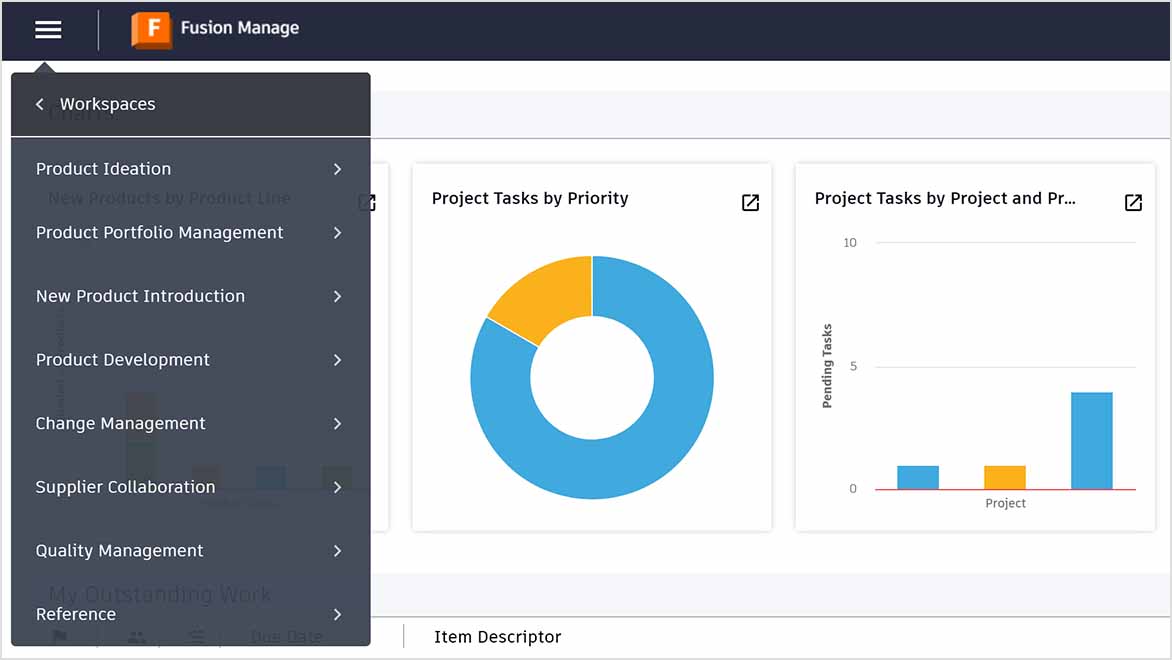& Construction

Integrated BIM tools, including Revit, AutoCAD, and Civil 3D
& Manufacturing

Professional CAD/CAM tools built on Inventor and AutoCAD
Agile product development is an iterative approach to creating products that emphasizes flexibility, collaboration, and customer feedback. It involves breaking down large projects into smaller tasks and organizing them in short, manageable cycles called sprints. Agile project management ensures that teams collaborate closely, adjust to changes quickly, and deliver value regularly, enabling faster and more responsive development processes.
Agile product development software is a tool designed to assist teams in managing the Agile process. It enables real-time collaboration, task management, backlog prioritization, and sprint tracking. These tools help streamline workflows, keep teams aligned, and ensure consistent progress toward product goals.
Agile project management supports product development by enabling quick adjustments to evolving customer needs. It fosters frequent collaboration between stakeholders, quick iterations, and regular reviews to ensure the product meets market demands while reducing development time and costs.
Agile product development follows a structured, iterative process, ensuring continuous improvement and collaboration at each stage, from initial concept through to final delivery
This stage involves defining the product's core goals, high-level requirements, and overall vision. It sets the foundation for the entire project by aligning the team on the product's purpose and desired outcomes.
In this phase, the project is broken down into smaller, manageable sprints with clear deliverables. The team plans the tasks, timelines, and resources needed to complete each sprint effectively.
Initial design concepts and prototypes are created and validated with stakeholders. This helps visualize the product early, ensuring it aligns with user needs and technical requirements before development begins.
The product is built incrementally in cycles, with each sprint focusing on adding specific features. Feedback from previous sprints is incorporated to refine the product and ensure it meets quality and user expectations.
Continuous testing occurs throughout the development process to identify and resolve issues early. This ensures that the product functions as expected and meets the necessary quality standards before moving to the next stage.
After the final sprint, the product is prepared for launch, incorporating any last-minute adjustments based on feedback. This phase ensures that the product is ready for users and meets all requirements for release.
Agile tools allow teams to quickly adjust to changes in requirements or priorities, ensuring a more adaptive development process.
By providing a shared platform, Agile software fosters seamless communication among team members and stakeholders, reducing misunderstandings.
Agile tools support shorter development cycles, allowing teams to release functional parts of the product faster, which accelerates time to market.
Agile software provides real-time insights into project progress, helping teams monitor performance and identify potential risks or bottlenecks early.
Agile product design applies Agile principles to the design phase, emphasizing iterative development and feedback. Designers work in short cycles, continuously refining prototypes based on user feedback. This allows for constant validation, ensuring the final design meets both customer needs and technical requirements.
Helps organize and prioritize tasks within sprints, ensuring the team is focused on the most critical work.
Enables real-time communication and file sharing, improving coordination between team members and stakeholders.
Tracks progress of tasks within each sprint, offering insights into completion rates and areas requiring attention.
Connects with other development tools (e.g., CAD software or version control systems), ensuring a seamless workflow across various platforms.
Flexibility
Shiftwave embraces agile product development, rapidly iterating designs and adapting based on real-time feedback to enhance performance and durability.
Collaboration
Project Mjolnir thrives on global collaboration, uniting students and engineers to design adaptive bikes that push boundaries and inspire.
Time to market
Powertrust accelerates production and reduces time to market using Autodesk Fusion, streamlining design, prototyping, and manufacturing processes.
Enhanced transparency
Termobrasa leverages Fusion to enhance agility, streamline operations, and ensure transparency with real-time data and full traceability.
Agile product development is crucial for delivering value and staying competitive in a global market. Learn what agile product development is and why companies are adopting agile processes to address market pressures.
Agile product development enables design teams to prototype and fabricate ideas faster, leading to a higher potential for market success.
Agile development is crucial for consumer product companies to deliver value and stay competitive. Here are five agile tactics to help your team stay ahead.
Learn about time to market (TTM) metrics, why they are important, and how you can implement them to achieve an agile product design process.
Learn about the principles of agile product development, a unique methodology that has taken over the worlds of software design and product design.
Agile product development processes are key to delivering more value to customers and staying competitive in a crowded, global market.
Learn more about agile product development with these top questions frequently asked by users.
Agile product development is an iterative approach to creating products that emphasizes collaboration, flexibility, and customer feedback. It involves breaking projects into smaller cycles, called sprints, to deliver value continuously.
Agile improves efficiency by breaking down complex projects into smaller tasks, allowing teams to focus on specific deliverables and make iterative improvements. This results in faster time-to-market, higher quality products due to ongoing testing and feedback, and better alignment with customer needs as priorities are reassessed after each sprint. Teams also benefit from improved collaboration across functions, fostering innovation and adaptability.
Transitioning to Agile can be difficult due to cultural resistance, lack of experience with iterative processes, and unclear role definitions. Teams might struggle with balancing frequent feedback loops and adhering to deadlines. To overcome these challenges, organizations need proper training, support from leadership, and tools that promote visibility, like Fusion Manage or Fusion Contributor.
Fusion supports Agile by providing a cloud-based platform where teams can design, simulate, and test products iteratively. Its real-time collaboration features enable team members and stakeholders to review updates instantly, share feedback seamlessly, and adapt designs based on insights. This ensures alignment and faster progress during each sprint while reducing the risk of miscommunication.
Fusion Contributor acts as a central hub for collaboration, ensuring all project data is stored and accessible in one place. Team members can track changes, manage version history, and provide feedback in real time. This capability reduces delays, fosters transparency, and ensures that stakeholders always have access to the latest version of the design.
Fusion Manage strengthens Agile workflows by providing tools for task tracking, process automation, and progress monitoring. Teams can assign tasks, set priorities, and track progress across sprints using customizable dashboards. Its real-time reporting features ensure everyone has clear visibility into project status, facilitating better decision-making and collaboration.
Yes, Fusion is particularly well-suited for Agile hardware development, providing tools for rapid prototyping, simulation, and manufacturability analysis. While it primarily focuses on physical product design, it integrates smoothly with software development tools, making it ideal for hybrid projects that involve hardware and software components.
These metrics help teams identify strengths and areas for improvement, ensuring continuous enhancement throughout the Agile process.


















